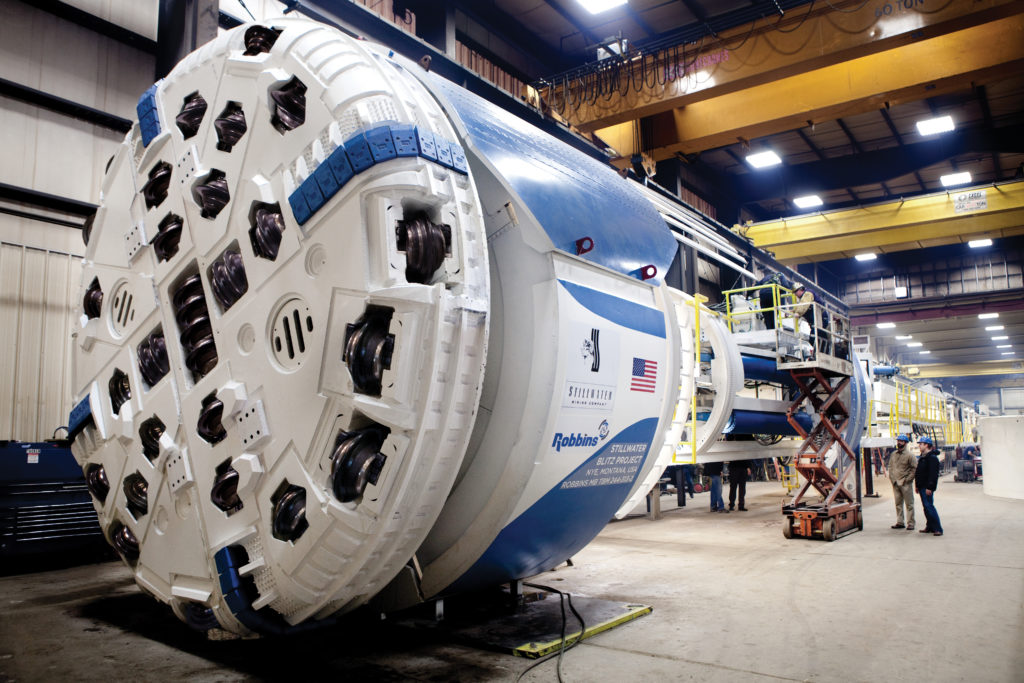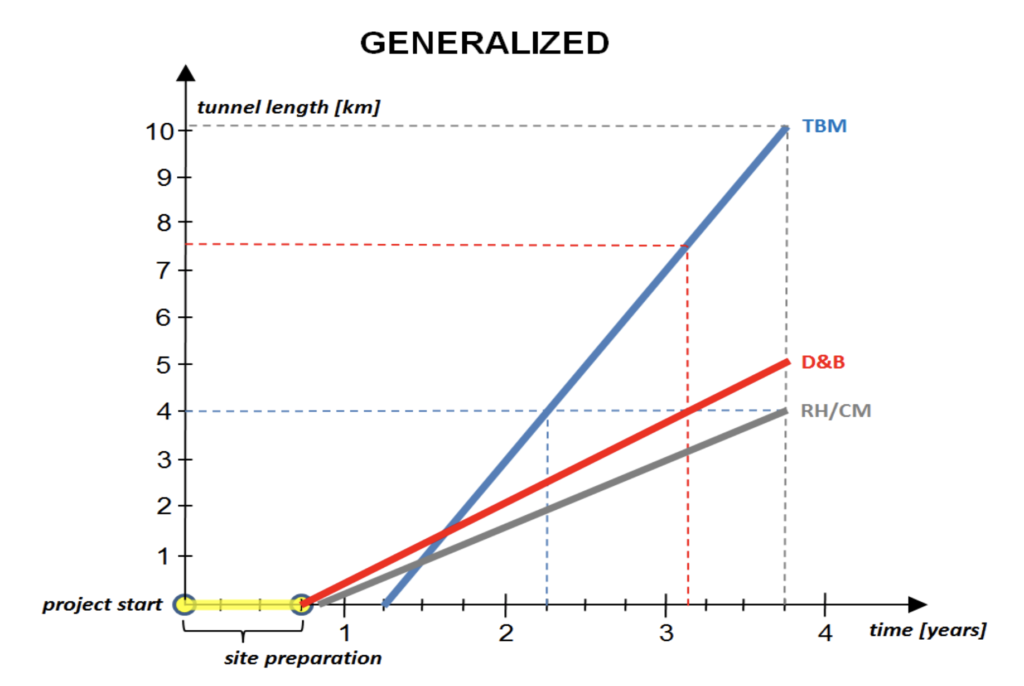Read the White Paper
Speedy Excavation at the Grosvenor Coal Mine
Find Out Now:
Is a TBM Right for Your Project?
Read the White Paper
The Next Generation of TBMs for Mines
![65 Years of Innovation and Experience [default]](https://www.robbinstbm.com/wp-content/uploads/2017/04/Side-Bar-Blue-Blocks_70-Years.jpg)
Our History
A Legacy of Innovation
Information 24/7
News & Media
Insights in the Industry:
Read the Robbins Blog
Surface deposits are becoming a thing of the past. As ore bodies become ever deeper throughout the world, the need for longer access tunnels and for mechanized tunneling methods to excavate them is on the rise. While TBMs have been used in civil works tunnels for many years, their potential in mining applications remains largely untapped. However, with mounting success stories and new technologies, the mining industry is looking to TBMs like never before.

Robbins’ close partnership with the mining industry spans decades, from non-circular prototype machines such as the Mobile Miner to early TBM usage in coal, copper, and gold mines worldwide. While those early machines were successful, modern machines are vastly more powerful and efficient than those tested and used in the 1970s and 1980s.
Compare the White Pine Copper Mine TBM, built in 1971, and a recent TBM from Montana, USA’s Stillwater Platinum and Palladium Mine and the improvements become clear. In 40 years, elements such as cutterhead power have nearly doubled, while cutters up to 20 inches in diameter can be provided to excavate harder rock.
| White Pine Copper TBM, 1971 | Stillwater Mine TBM, 2011 | |
| Tunnel Length | 1,783 m | 6,975 m |
| TBM Type | Main Beam | Main Beam |
| TBM Diameter | 5.49 m | 5.49 m |
| Disc Cutter Diameter | 11 inches | 19 inches |
| Cutterhead Power | 895 kW | 1,968 kW |
| Cutterhead Torque | 2,332,767 N-m | 3,095,000 N-m |
| Machine Thrust | 7,031 kN | 10,898 kN |
| Machine Weight | 205 metric tons | 227 metric tons |
| Advance Rate | 1 m per hour average | 4.8 m per hour average |
| Ground Support | two rotary percussive roof drills | McNally Slat Support System, two roof bolt drills, probe drill ring, core drills, ring beam erector |
TBMs have been proven to outperform conventional methods such as drill & blast and roadheaders time after time. While certain trade-offs exist, such as longer lead time and higher initial investment, the faster advance rate of TBMs in long tunnels makes them a clear winner. Based on decades of field research, we have found the generalized graph below to be true for most TBM tunnels when compared with conventional methods.

Based on field observations such as those at two recent projects, Stillwater and Grosvenor, TBMs are capable of much faster advance rates. The advantage becomes clear in tunnels over 2 km in length. TBM advance is typically on the order of two to three times faster than drill & blast. When compared to roadheaders, TBMs are at least ten times faster.
A TBM creates a smooth, round excavation profile compared to the non-uniform profiles created by drill & blast and roadheader operations. This smooth profile reduces the amount of maintenance needed on the finished tunnel, as well as the amount of required ground support during tunnel excavation. If the tunnel is segmentally lined, a minimal amount of maintenance is required.
Less emissions from equipment associated with tunnel boring results in better air quality in tunnels, and lesser requirements for ventilation.
Tunnel boring machines are capable of installing any type of ground support that can be installed by conventional operations. But unlike conventional operations, TBM operators work from a protected platform, securely away from the excavation face and any potential hazards. TBM tunneling is also done without the use of explosives, making the method fundamentally safer.
TBMs are becoming ever more mobile and specialized. Robbins is refining designs for TBMs that can bore through curves as small as 45m, making them a logistical tool for complex mine development. Other adaptations, such as explosion proof TBMs, allow for excavation even when gas is present in the tunnel.

 Close
Close